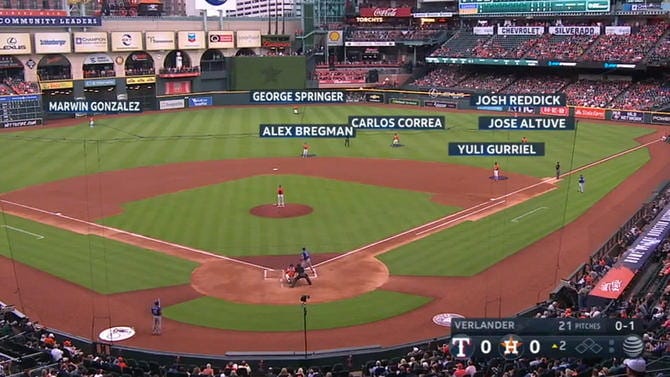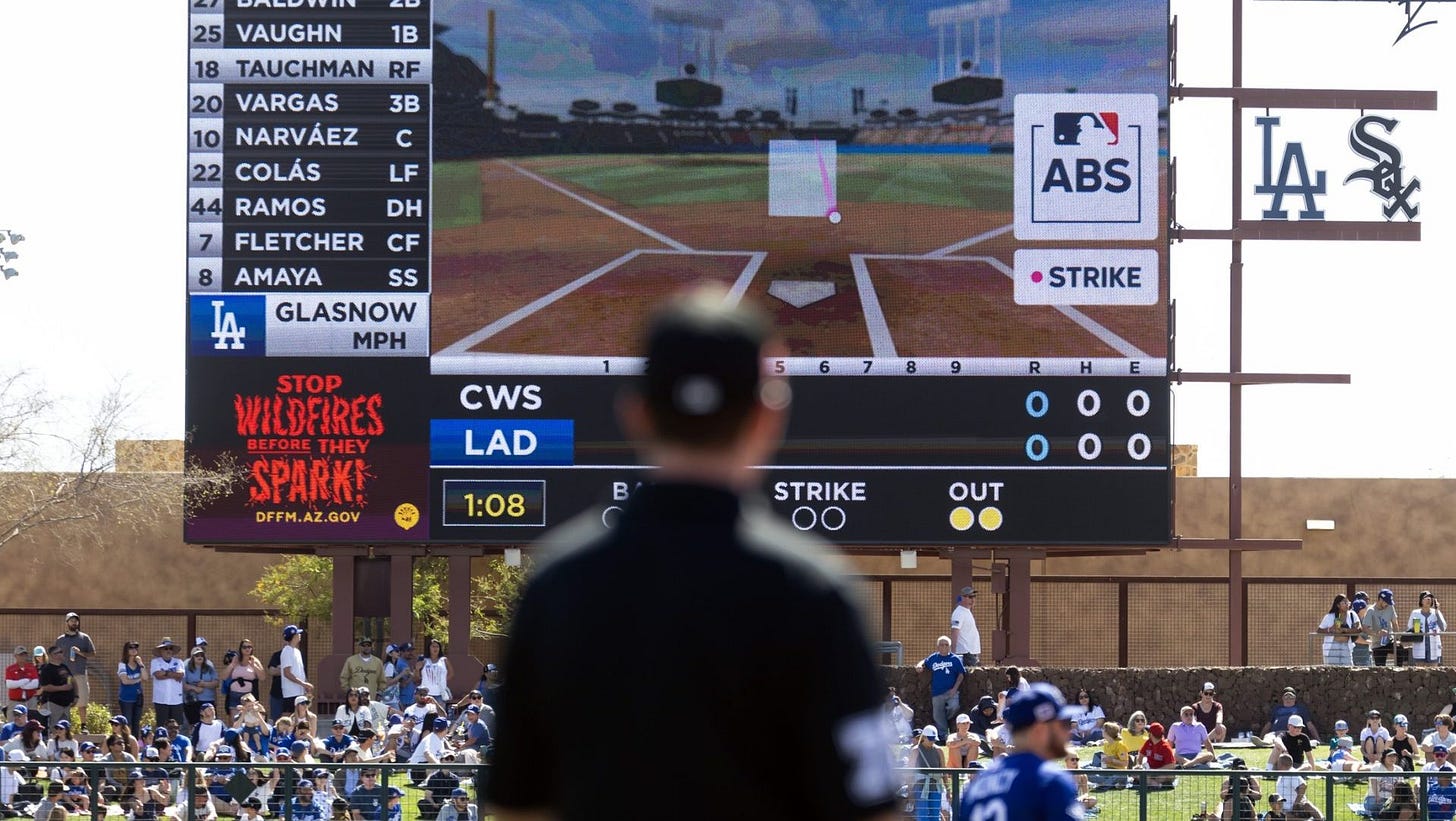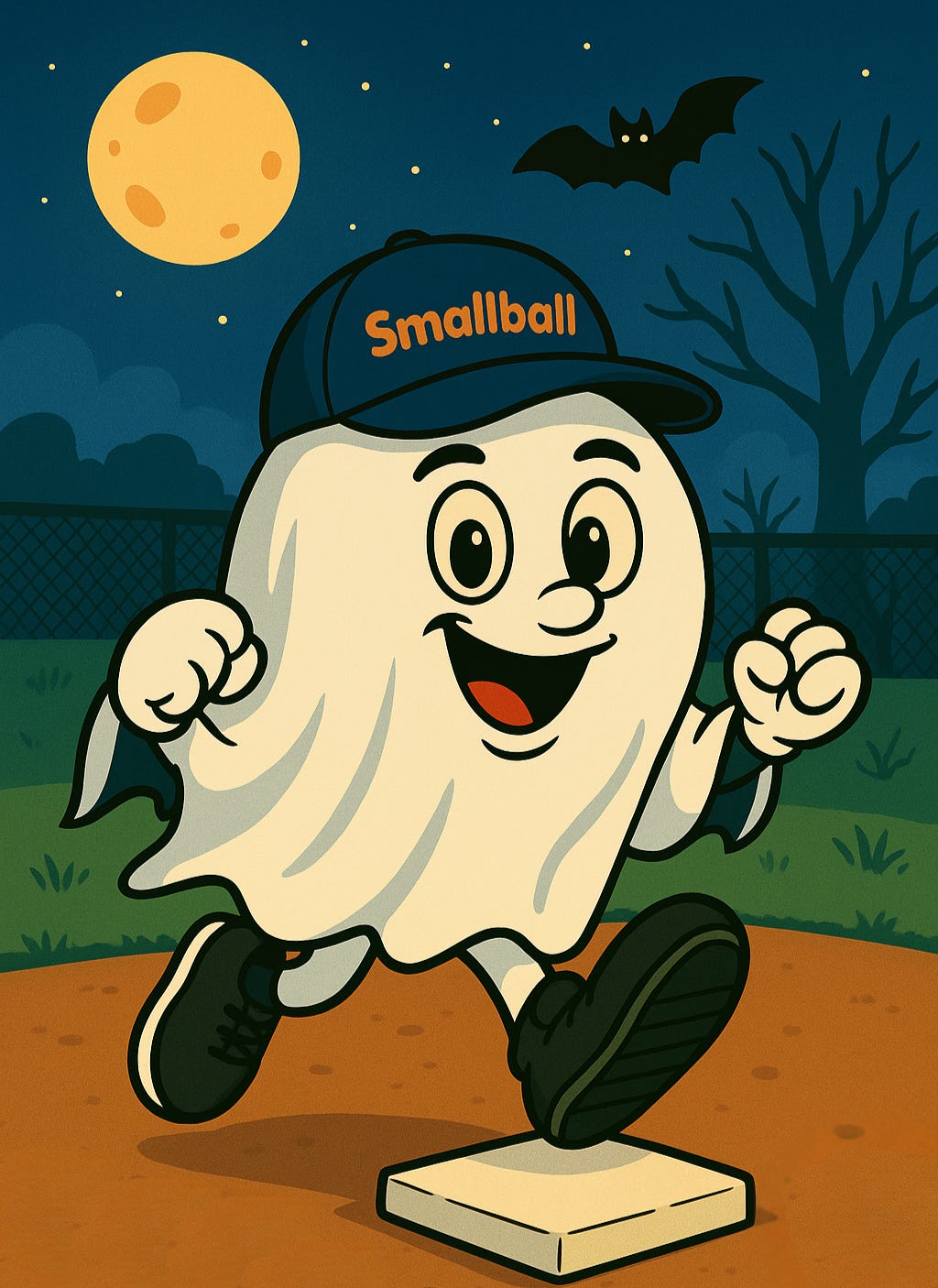We’ve had so much fun talking about Banana Ball… that crazy, hilarious version of baseball the Savannah Bananas play.
One of our favorite Banana Ball rules is the game clock. Once it hits two hours… no new inning can start.
🎥 It keeps everything speedy, exciting, and full of action.
But guess what? You might be surprised to learn that Major League Baseball (MLB) actually has its own special clock now too… and it's very new!
Ready to hear all about it? Let’s dive in!
Introducing... the Pitch Clock! ⏰
In 2023, MLB started a brand-new way to speed up the game: the pitch clock!
⚙️ Here's how it works:
When there are no runners on base, pitchers have just 15 seconds to start their pitch.
If there are runners on base, pitchers get a little extra time… 18 seconds.
Batters need to be ready, too! They must be in the batter’s box and ready to hit with 8 seconds left on the clock.
If a pitcher is too slow and doesn’t start his pitching motion before the clock runs out… it’s a ball.
If a batter isn't ready in time, it’s a strike.
There’s also a 30-second timer between batters. And limits to other things that slow the game down (but are an important part of the strategy!) like pick-off attempts by the pitcher, timeouts by the batter, and mound visits by the coach.
Basically, everything moves more quickly!
Now you know how it works. But why did they even need a pitch clock?
Baseball’s Big Problem 🐢
Games had started to get really long!
Pitchers were taking too long between pitches, and batters kept stepping out to adjust their gloves or helmets, slowing down the action.
All this waiting wasn't just making games longer… it was making fans less interested.
One of the craziest examples of slow play was during the 2016 playoffs, when there was a nearly two-minute break between pitches!
🎥 That’s long enough for José Altuve to hit seven inside-the-park home runs!
So, after testing out different solutions, MLB introduced the pitch clock to cut down unnecessary waiting and keep fans glued to every pitch.
But has it made a difference? Are the games faster?
Let's See the Results! 📊
Check out this cool graphic showing game times rising from under 2 hours a century ago up to over 3 hours in the 2000s…
And then dropping sharply after the pitch clock began in 2023!
What does that look like in 2025?
The numbers are holding steady: about 2 hours and 40 minutes per game, still far shorter than the 3+ hour games before the pitch clock.
But the pitch clock isn't just changing how long games last…
🎥 Watch these experts talk about how it changes the way pitchers and hitters approach every at-bat.
And in some games, the pitch clock is having a HUGE impact on who wins and who loses.
🎥 Here’s an example where Padres star Manny Machado argues an automatic strike call… and gets ejected from the rest of the game!
🎥 And here’s a walk-off win thanks to the pitch clock!
So the pitch clock is definitely speeding things up… but it’s also creating some new twists and turns in how games unfold!
And it’s not the only big rule change in baseball.
What Else is New? 🚨
Another big change was banning defensive shifts in 2023.
Shifts are when teams move their fielders to one side of the field to better defend against batters who usually hit in that direction.

In the 2010s, shifts became super common… used in more than 30% of at-bats by some teams.
Now, teams must have two infielders on each side of second base. And all four infielders must have both feet on the infield dirt when the pitch is thrown.
That means no sneaky shortstops camping out in shallow right field anymore!
Also in 2023, MLB made the bases bigger, going from 15-inch squares to 18 inches. Those extra few inches can make a huge difference!
Now players are stealing bases more often and getting caught less!
In 2022, teams attempted 1.4 steals per game and succeeded 75% of the time.
After the bigger bases and new pickoff rules? 1.8 stolen base attempts per game with about an 80% success rate.
A few years earlier, in 2020, baseball added “ghost runners” in extra innings.
During the regular season, if a game goes to extra innings, both teams start each extra inning with a runner on second base.
This helps games end faster by making it easier to score runs. But this special rule is only for the regular season. Only real runners are allowed in the playoffs.
All of these rule changes were designed to make baseball quicker and more exciting. But baseball’s not done yet…
Now, the league is exploring technology that could change the game even more.
MLB is testing something called ABS, which stands for Automated Ball-Strike System. It uses cameras and computers to help call balls and strikes. Some of the tests so far let ABS make every call, and others let players challenge the human umpire’s call with an ABS review.

Sounds perfect, right? But it’s not.
The system can make mistakes. Usually by about half an inch… which means a pitch that’s technically a strike might be called a ball (or the other way around).
That has players, coaches, and umpires wondering: Is an imperfect robot better or worse than an imperfect human?
The league is still deciding. But it’s possible ABS could be coming as soon as 2026.
🎥 Curious what a former MLB pitcher thinks? Here’s Trevor May’s take!
🎤 What Do You Think?
Alright, now let’s really get wild.
🎨 Build-A-Bot: Create Your Own Robot Ump!
Ask your grown-up to help you print this. Then grab your crayons, markers, or colored pencils, and bring your ump-bot to life! ⚾🤖🎉
💡 What We Learned Today 💡
Banana Ball shows fans just how fun baseball can be when the action never stops.
Now, Major League Baseball is going for its own kind of fast.
Games are shorter. Stolen bases are up. And maybe… just maybe… the robot umpires are coming.
Some people love it. Some are still adjusting. But one thing’s for sure…
Baseball isn’t just going for faster.
It’s going for funner-er. (Okay, okay, that’s not a real word. But it should be!)
⏳ BONUS: The Clock That Took 120 Years to Work ⏳
Now’s probably a good time to tell you that the pitch clock actually has a secret history.
It feels brand new, but baseball’s been trying (and failing!) to make pitchers hurry up for over 120 years!
Back in 1901, MLB introduced its first-ever rule about pitchers needing to pitch quickly… just 20 seconds after getting the ball from the catcher.
But guess what? They didn’t even have a real clock!
Umpires had to guess how long 20 seconds felt, so everyone mostly ignored the rule, and games got slower and slower.
Then in the 1960s, some teams actually put big timers called “pitchometers” right on the scoreboard.
They were fun and flashy, but still nobody took them seriously. One clock even got confused whenever an airplane flew by!
After all these fails, baseball decided to forget the clock idea for a long time.
Fast forward to 2023. Now, the clocks are real. The rules are real. And every player has to follow them every time they play.
Pitchers and batters have to hustle, fans get shorter games, and baseball finally has its successful clock… after over a century of waiting.
Sometimes ideas just take a little extra time. Just like baseball itself!









From Banana Ball to pitch clocks, baseball has finally figured out what moms have been saying for decades: “Hurry it up, I’ve got dinner in the oven.” 🍌⚾⏰